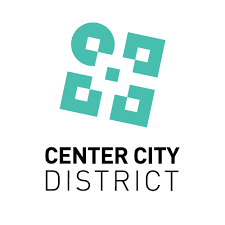A recent Philadelphia Center City District report underscores why the next president of the Memphis Downtown Commission must be someone who’s short on cheerleading and long on a realistic understanding of the dynamics that determine if a downtown is successful.
Downtown Memphis is at a pivotal time in its history. That’s why selecting the next president is about more than finding someone the Downtown Memphis Commission feels comfortable with, someone they know, or someone with the political connections to get the job. The Commission must instead hire someone highly capable and experienced in navigating downtown through its distinctive opportunities and challenges.
Ironically, the Philadelphia report is the most instructive report on downtown Memphis in years. The report defines downtowns as the densest job centers in the U.S. and tracks key metrics for 25 downtowns, including Memphis. The indicators are based on the rate of return for downtown residents, visitors, and workers using anonymized cellphone data, and tracking the residents, workers, and visitors against the pre-pandemic years.
The report, Downtowns Rebound: The Data Driven Path, is a mixed bag for Memphis, but speaks to the importance of the coming years.
Fragile Job Market and MLGW
The good news is that Memphis finishes in the top four – at 75% – in the percentage of workers, residents, and visitors in downtown when spring of this year is compared to spring in pre-pandemic 2019. Another encouraging sign, when compared to other downtowns, is that Memphis is sixth in the percentage of visitors over the same period of time and fifth in percentage of downtown workers employed in leisure and hospitality jobs.
Meanwhile, Memphis slides toward the bottom of the rankings when it comes to growth in the number of workers.
This should be a priority for the next president of the Downtown Memphis Commission, and it also should be one for the Greater Memphis Chamber. The downtown jobs market is fragile and with one-third of its workers able to work remotely, the job metrics could get worse without an action plan to keep every job from moving and fight for every new job coming into Memphis.
If MLGW president Doug McGowen is successful in moving city government’s largest division from downtown to a location outside of Memphis to an unincorporated part of Shelby County (according to assessor’s records), this indicator will take an even bigger hit.
Back when Memphis and Shelby County joined together to create the Center City Commission – now named Downtown Memphis Commission – it stated that a cornerstone of downtown’s future is in remaining a center of government. That goal too would take a hit with the move of MLGW headquarters to the ‘burbs.
One dream of Mr. McGowen’s that came crashing down when he was City of Memphis COO was the construction of a prestigious Loew’s Hotel across from City Hall, a project that at one point included the renovation of the historic downtown Police Department headquarters that has stood empty since 1981. He could arguably turn that hotel failure into a triumph for downtown if MLGW converted that 112-year-old building into its new headquarters.
Asking The Right Questions
But I digress. This post is about the Philadelphia Center City District’s report on the health of 25 downtowns, including Memphis.
Other downtowns in the report are Nashville, Washington DC, Chicago, Midtown Manhattan, Boston, Portland, Atlanta, Indianapolis, Seattle, Denver, Los Angeles, Dallas, San Francisco, Columbus, Austin, Phoenix, San Diego, Houston, Charlotte, San Jose, Jacksonville, Fort Worth, and San Antonio.
Generally, the metrics suggest a steady progress by cities toward recovery since the end of the pandemic although they have not returned to 2019 levels.
Paul R. Levy, President and CEO of Philadelphia Center City District, writes in the report: “Urban policymakers, mayors, business leaders, property owners, and downtown managers now confront basic questions. Can recovery be accelerated to restore sidewalk vitality and the tax revenues that support municipal services? Can transit systems restore service levels before federal relief funds expire? Can workers, audiences, tourists, and shoppers be encouraged to return to in-person activities in downtown areas? More fundamentally, can (or should) we restore the status quo of 2019 or do downtowns need to reinvent themselves, learning to thrive under fundamentally changing conditions?”
These are excellent questions for the DMC search committee to ask finalists for the president’s job.
If the metrics demonstrate one thing, it is how quickly a city can move from the top of the rankings to the bottom, as shown by San Francisco which is fighting against what some urban observers are calling a “doom loop.”
What Is Downtown’s Ecosystem?
There is some satisfaction that Memphis routinely ranks ahead of San Francisco, and in searching for answers, the person charged with turning the California city around said: “If downtowns aren’t a place you have to be, then they have to become places you want to be.” It’s a good mantra for downtown Memphis and the new DMC president.
San Francisco proves how fragile downtowns can be and how quickly a trajectory can change. It acts as a warning shot for how quickly a narrative can turn negative and how devastating it can be and how hard it is to reverse it.
There are predictions that downtowns will become smaller, tighter, less worker-oriented places. There are also predictions that the future of downtowns will hinge more and more on residents. Memphis is fortunate in this category with downtown residents at 115% in 2023 compared to pre-pandemic; however, there is the oft-spoken comment by many that present downtown conditions indicate they are taken for granted.
The same applies to downtown workers. As Michael Shvo, a real estate magnate who owns the Transamerica Pyramid in San Francisco, said: “Tenants want to come to work in a beautiful building with amenities and restaurants and places where they can meet friends and an ecosystem around their working environment.”
If they don’t find that ecosystem, we know now what they will do: they will work from home. And 38% of downtown Memphis’ workers can do just that.
Downtown Memphis’ ecosystem is frayed and it needs an inventory of what is needed for it to be the place people want to be and a Downtown Memphis Commission reinvigorated with the leadership of a new president should make this happen and then get it done.
Magic in the Mix
The most definitive indicator of success in downtowns, according to the report, is found in their mix. “Single use districts are a formula for failure,” the report said. “The more we can comfortably mix offices, education, and health care institutions, hotels, and residential buildings, even within the same development, the more animated our sidewalks, the safer our streets…City centers, particularly those with strong transit systems, are places of opportunity for workers at all skill and educational levels.
“When office and other high-skilled workers are remote, they gain flexibility with childcare, reduce costs, and time of commuting. But their absence limits the time they devote informally to mentoring the next generation of professionals and reduces both mid-level jobs and those in building maintenance, security, transportation, retail, and restaurants, all of which rely on the presence of others…City centers historically have been places for innovation, collaboration, the generation of new ideas, technologies, and new industries that create new opportunities for work and rising standards of living.
“The report opened with a basic question: ‘Can downtowns in the United States rebound, prosper, and restore their primary generative functions?’ The answer is most definitely yes. But only if we plan carefully for the goals we seek, base decisions on a clear understanding of local conditions, take informed risks, and make the investments required for a vibrant and inclusive city future. The fate of downtowns, the largest, concentrated centers of employment in most regions, depend on the decisions we take today.”
It’s a powerful charge for downtown leaders and should be on every Downtown Memphis Commission member’s mind as they consider who can best tackle the needs of the Memphis downtown and who can answer a resounding yes to the question about its future.
Key Metrics for Downtown
The key findings in the report:
- 87% – Residents, workers and visitors in Memphis Core Downtown in 2023 Q2 compared to 2019 Q2 – Memphis had #4 highest percentage (Nashville was first at 100% and lowest was 69% in San Francisco)
- 75% – Non-resident workers in Memphis Core Downtown in 2023 Q2 compared to 2019 Q2 (Memphis had #5 highest percentage, San Antonio was #1 at 85% and lowest was San Francisco at 52%)
- 87% – Visitors in Memphis Core Downtown in 2023 Q2 compared to 2019 Q2 (Memphis was #6 in highest percentage, Nashville was #1 at 103% and San Francisco was lowest at 66%)
- 32% – Percentage of Greater Memphis Downtown-Employed Residents who Work in Greater Downtown, 2020 (Memphis is #14; Midtown Manhattan is #1 at 59% and San Jose was lowest at 13%)
- 5% – Average Annual Percentage Change, 2011-2019 in Core Downtown Memphis Private Employment (Memphis is #19; San Jose was #1 at 6.5% and San Antonio was last at minus .75%)
- -6% – Memphis Core Downtown Private Employment, Percentage Change, 2019-2020 (Memphis is #17; Jacksonville is #1 at 5% and San Diego was last at – 16%)
- -2.5% -Memphis Core Downtown Private Office Sector Jobs, Annual Percentage Change, 2011-2019 (Memphis was last in the decade following the Great Recession and San Jose at 9% was #1)
- -1% – Memphis Core Downtown Private Office Sector Jobs, Average Annual Percentage Change, 2019-2020 (Memphis is #24 and Nashville is #1 at10%)
- 75% – Non-resident Workers in Memphis Core Downtown in 2023 Q2 compared to 2019 Q2 (Memphis is #5; San Antonio is #1 at 86% and San Francisco is last at 51%)
- 19% – Percentage of Downtown Memphis Private Employment in Leisure and Hospitality, 2019 (Memphis is #5; San Diego was #1 at 34% and Jacksonville was last at 7%)
- 5% – Percentage of Downtown Memphis Jobs That Can Be Done Remotely (Memphis is #2; San Antonio is #1 at 36% and Charlotte was last at 57%)
- 20% – Percentage of Core Downtown Workers living Within 0-2 Miles (Memphis is #12; Philadelphia is #1 at 28% and Phoenix is last at 8% – 55% of downtown Memphis workers live within five miles of downtown)
- 115% – Residents in Memphis Greater Downtown in 2023 Q2 compared to 2019 Q2 (Memphis is #10; Portland is #1 at 130% and Phoenix is last at 90%)
- 87% – Visitors in Memphis Core Downtown in Q2 2023 compared to Q2 2019 (Nashville is #1 at 105% and San Francisco is last at 70%)
- 40% – Percentage of Downtown Memphis Visitors from Outside Region (Memphis is #7; Nashville is #1 at 60% and Los Angeles is last at 25%)
***
Join us at the Smart City Memphis Facebook page and on Instagram for daily articles, reports, and commentaries that are relevant to Memphis.





